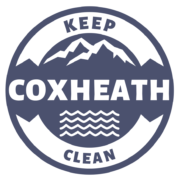Research
Research has been underway since May 2023 in consultation with universities, government, elders in Unama’ki and experts in the field for independent review specifically for our area.
January 2, 2024 - Our primary independent research has been completed by Dr. Steven H. Emerman, Ph.D. It is available for review:
Cape_Breton_Emerman_Report (PDF)
November 13, 2023 - Research continues behind the scenes. For now, please these links related to key risks in our case.
The Myth of Sulfide Mining Without Contamination (Website)
Is sulfide mining REALLY a gift? (Video)
September 11, 2023 - Many homeowners may not be aware that although the Province owns the mineral rights for your land, the homeowner needs to approve entry for exploration.
Mineral Rights, Landownders, and Mineral Exploration NS (PDF)
August 21, 2023 - Initial points of consideration:
The proposed land to be sold by CBRM (to be voted on Tuesday August 22) is over 1000 acres. Consult the map below outlining the yellow area (CBRM) and the orange area (identified in Nova Copper proposal):
Keep Coxheath Clean Assn. understands that:
- The CBRM does not make decisions about mining or related environmental issues, however we are asking the CBRM to listen to the group representing 1100+ constituents who requested the opportunity to have their voices heard about how this public land should be used and sold. The request to be heard on this matter was received but no further response from the CBRM. The motion to sell the "Beechmont Surplus PID Land" needs to be suspended until such time as a dialog can be arranged.
- Should this land sale proceed, we recognize that the Provincial government has ultimate control the mineral resources act over approval to mine and we will carry our concerns to be heard at that level as well. We do not have confidence that the regulatory framework as it stands will protect the watersheds (inside, outside and below the proposed mine area) from serious contamination since the act only appear to cover limits on suspended solids, not dissolved elements and compounds such as sulfides, arsenic or other toxic chemicals commonly released during mining operations.
- We recognize that the Federal government has regulations for mining-related toxins under the fisheries act, however our understanding is that the release levels of these toxins are allowed up to limit and the limit is self-monitored by the mine. Accidental leakage and seepage particularly in our harsh and varying climate are key concerns.
- Given the state of regulations we are extremely concerned that yet another environmental tragedy as a result of mining will occur and when the damage is done, it will be too late and the result may even be irreparable.
- Based on the events in other provinces and countries, we are currently not sufficiently convinced that adequate measures are in place to effectively protect the citizens and the environment in a relatively new copper mining landscape in Nova Scotia. A serious pause needs to be taken to determine at what total "cost" to our community and province is when delivering our resources to private corporations.
Perspective on Current Copper Mining
We recommend you take a moment to watch this segment produced by DW, the German equivalent of CBC, an official public broadcaster.
Copper and the dark side of the energy transition | DW Documentary
